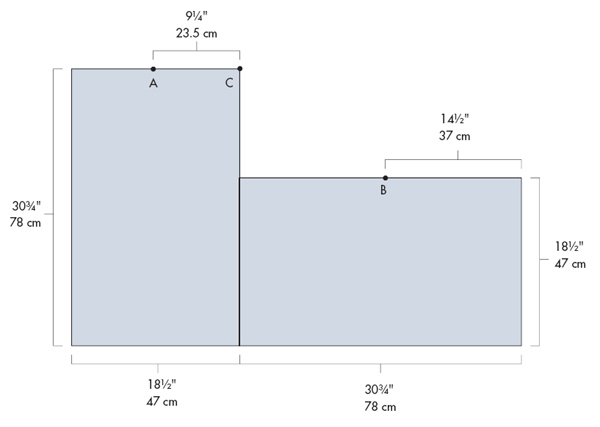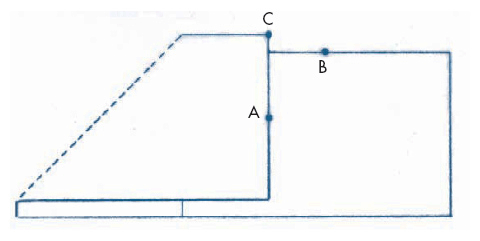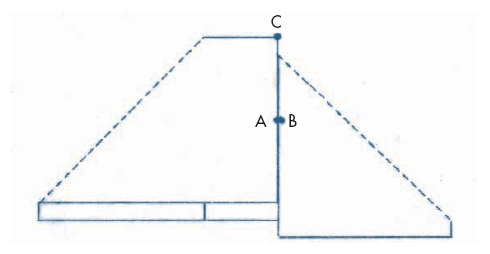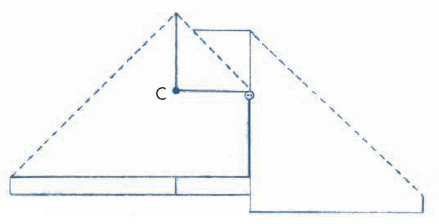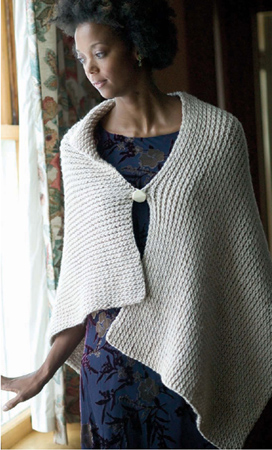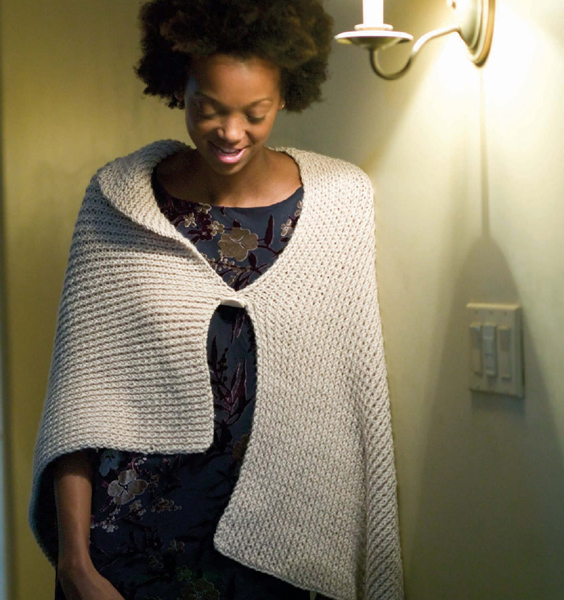
Jo Sharp knows that good design doesn’t need to be complicated. To construct this simple wrap, Jo first knitted two identical rectangles in a noncurling, slipped rib stitch. Then she and her design team pinned the rectangles on a mannequin to see how many ways they could drape, wrap, or join the pieces together. The asymmetrical one-button wrap you see here is their favorite assembly, but by no means the only good one. Play around with your own pieces before sewing them together—you just may come up with an arrangement that you like even better.
About 20" (51 cm) long from shoulder line to bottom of right front, and about 24" (61 cm) long from shoulder to bottom of left front (see Notes).
About 1040 yd (951 m) of aran-weight (Medium #4) yarn.
We used: Jo Sharp Silkroad Aran Hand Knitting Yarn (85% wool, 10% silk, 5% cashmere; 104 yd [95 m]/50 g): #108 ricepaper, 10 balls.
Size 10½ (7 mm): straight. Adjust needle size if necessary to obtain the correct gauge.
Tapestry needle; one 1¼" (3.2-cm) button.
21½ sts and 18 rows = 4" (10 cm) in patt st with rib relaxed.
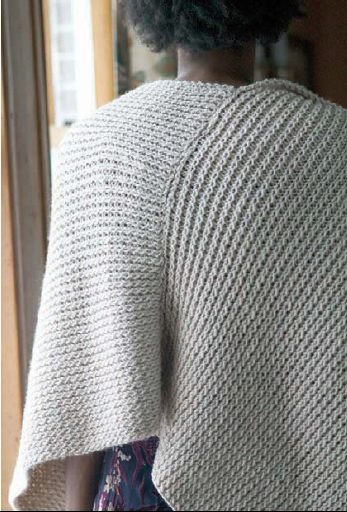
Rectangle: (make 2) CO 99 sts. Work as foll:
Row 1: Sl 1 purlwise (pwise) with yarn in front, *k1 through back loop (tbl), p1; rep from *.
Row 2: Sl 1 pwise with yarn in back, *p1, k1tbl; rep from * to last 2 sts, p1, k1. Rep Rows 1 and 2 until piece measures 30¾" (78 cm) from beg. BO all sts loosely.
Begin with a luscious yarn that has incredible drape, and you can’t go wrong.
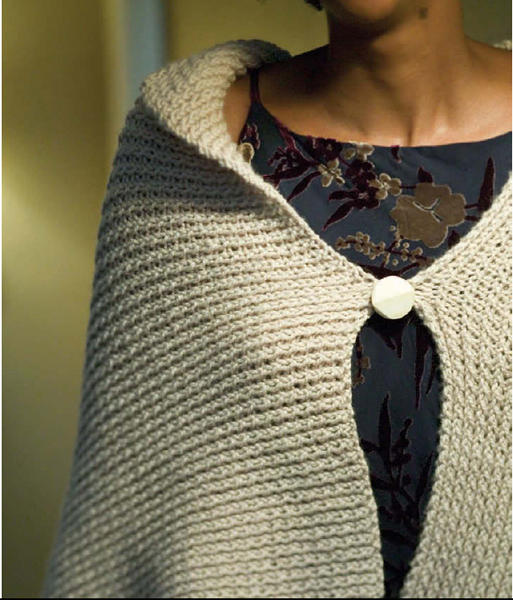
With yarn threaded on a tapestry needle, sew the short side of one rectangle to the long side of the other rectangle as shown in Figure 1. Measure and mark points A, B, and C designated by black dots. Make first fold as shown in Figure 2. Make second fold as shown in Figure 3 so that points A and B meet. Sew a button at A/B to join the two pieces. Fold point C gently to outside to create a lapel effect as shown in Figure 4.
